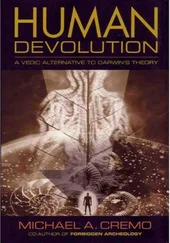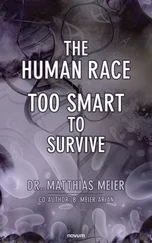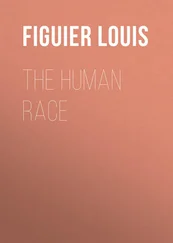Michael Cremo - Forbidden Archeology - The Hidden History of the Human Race
Здесь есть возможность читать онлайн «Michael Cremo - Forbidden Archeology - The Hidden History of the Human Race» весь текст электронной книги совершенно бесплатно (целиком полную версию без сокращений). В некоторых случаях можно слушать аудио, скачать через торрент в формате fb2 и присутствует краткое содержание. Год выпуска: 1992, ISBN: 1992, Издательство: Torchlight Publishing, Жанр: Старинная литература, на английском языке. Описание произведения, (предисловие) а так же отзывы посетителей доступны на портале библиотеки ЛибКат.
- Название:Forbidden Archeology: The Hidden History of the Human Race
- Автор:
- Издательство:Torchlight Publishing
- Жанр:
- Год:1992
- ISBN:9780892132942
- Рейтинг книги:4 / 5. Голосов: 1
-
Избранное:Добавить в избранное
- Отзывы:
-
Ваша оценка:
- 80
- 1
- 2
- 3
- 4
- 5
Forbidden Archeology: The Hidden History of the Human Race: краткое содержание, описание и аннотация
Предлагаем к чтению аннотацию, описание, краткое содержание или предисловие (зависит от того, что написал сам автор книги «Forbidden Archeology: The Hidden History of the Human Race»). Если вы не нашли необходимую информацию о книге — напишите в комментариях, мы постараемся отыскать её.
Forbidden Archeology: The Hidden History of the Human Race — читать онлайн бесплатно полную книгу (весь текст) целиком
Ниже представлен текст книги, разбитый по страницам. Система сохранения места последней прочитанной страницы, позволяет с удобством читать онлайн бесплатно книгу «Forbidden Archeology: The Hidden History of the Human Race», без необходимости каждый раз заново искать на чём Вы остановились. Поставьте закладку, и сможете в любой момент перейти на страницу, на которой закончили чтение.
Интервал:
Закладка:
Thus a person desiring to verify paleoanthropological reports will find it very difficult to gain access to the “real facts,” even if he or she is able to travel to the site of a discovery. And, of course, limitations of time and money make it impossible to personally examine more than a small percentage of the totality of important paleoanthropological sites.
A third problem is that the facts of paleoanthropology are seldom (if ever) simple. A scientist may testify that “the fossils were clearly weathering out of a certain Early Pleistocene layer.” But this apparently simple statement may depend on many observations and arguments involving geological faulting, the possibility of slumping, the presence or absence of a layer of hillwash, the presence of a refilled gully, and so on. If one consults the testimony of another person present at the site, one may find that he or she discusses many important details not mentioned by the first witness.
Different observers sometimes contradict one another, and their senses and memories are imperfect. Thus, an observer at a given site may see certain things, but miss other important things. Some of these things might be seen by other observers, but this could turn out to be impossible because the site has become inaccessible.
Then there is the problem of cheating. This can occur on the level of systematic fraud, as in the Piltdown case. As we shall see, to get to the bottom of this kind of cheating one requires the investigative abilities of a super Sherlock Holmes plus all the facilities of a modern forensic laboratory. Unfortunately, there are always strong motives for deliberate or unconscious fraud, since fame and glory await the person who succeeds in finding a human ancestor.
Cheating can also occur on the level of simply omitting to report observations that do not agree with one’s desired conclusions. As we will see in the course of this book, investigators have sometimes admitted that they have observed artifacts in certain strata, but never reported this because they did not believe the artifacts could possibly be of that age. It is very difficult to avoid this, because our senses are imperfect, and if we see something that seems impossible, then it is natural to suppose that we may be mistaken. Indeed, this may very well be the case. Thus, cheating by omitting to mention important observations can have an important effect on paleoanthropological conclusions, but it cannot be eliminated. It is simply a limitation of human nature that, unfortunately, can have a considerably deleterious impact on the empirical process.
The drawbacks of paleoanthropological facts are not limited to excavations of objects. Similar drawbacks are also found in modern chemical or radiometric dating studies. For example, a carbon 14 date might seem to involve a straightforward procedure that reliably yields a number—the age of an object. But actual dating studies often turn out to involve complex considerations regarding the identity of samples, and their history and possible contamination. They may involve the rejection of some preliminary calculated dates and the acceptance of others on the basis of complex arguments that are seldom explicitly published. Here also the facts can be complex, incomplete, and largely inaccessible.
The conclusion we draw from these limitations of paleoanthropological facts is that in this field of study we are largely limited to the comparative study of reports. Although “hard evidence” does exist in the form of fossils and artifacts in museums, most of the key evidence that gives importance to these objects exists only in written form.
Since the information conveyed by paleoanthropological reports tends to be incomplete, and since even the simplest paleoanthropological facts tend to involve complex, unresolvable issues, it is difficult to arrive at solid conclusions about reality in this field. What then can we do? We suggest that one important thing we can do is compare the quality of different reports. Although we do not have access to the real facts, we can directly study different reports and objectively compare them.
A collection of reports dealing with certain discoveries can be evaluated on the basis of the thoroughness of the reported investigation and the logic and consistency of the arguments presented. One can consider whether or not various skeptical counterarguments to a given theory have been raised and answered. Since reported observations must always be taken on faith in some respect, one can also inquire into the qualifications of the observers.
We propose that if two collections of reports appear to be equally reliable on the basis of these criteria, then they should be treated equally. Both sets might be accepted, both might be rejected, or both might be regarded as having an uncertain status. It would be wrong, however, to accept one set of reports while rejecting the other, and it would be especially wrong to accept one set as proof of a given theory while suppressing the other set, and thus rendering it inaccessible to future students.
We apply this approach to two particular sets of reports. The first set consists of reports of anomalously old artifacts and human skeletal remains, most of which were discovered in the late nineteenth and early twentieth centuries. These reports are discussed in Part I of this book. The second set consists of reports of artifacts and skeletal remains that are accepted as evidence in support of current theories of human evolution. These reports range in date from the late nineteenth century (the Pithecanthropus of Dubois) to the 1980s, and they are discussed in Part II. Due to the natural interconnections between different discoveries, some anomalous discoveries are also discussed in Part II.
Our thesis is that in spite of the various advances in paleoanthropological science in the twentieth century there is an essential equivalence in quality between these two sets of reports. We therefore suggest that it is not appropriate to accept one set and reject the other. This has serious implications for the modern theory of human evolution. If we reject the first set of reports (the anomalies) and, to be consistent, also reject the second set (evidence currently accepted), then the theory of human evolution is deprived of a good part of its observational foundation. But if we accept the first set of reports, then we must accept the existence of intelligent, toolmaking beings in geological periods as remote as the Miocene, or even the Eocene. If we accept the skeletal evidence presented in these reports, we must go further and accept the existence of anatomically modern human beings in these remote periods. This not only contradicts the modern theory of human evolution, but it also casts grave doubt on our whole picture of the evolution of mammalian life in the Cenozoic era.
In general, if A contradicts B it is not necessary to prove that A is right in order to prove that B is wrong. To discredit B, all that is required is to show that A and B are both equally well supported by arguments and evidence. Then they cancel each other out. That is the case with our two sets of reports.
In making this study, there are a number of basic features of modern geology and paleontology that we are accepting as a fixed reference framework. These are the system of geological time divisions, the modern radiometric dates for these divisions, the succession of faunal types in successive time divisions of the Cenozoic era, and the basic principles of stratigraphy.
It might be argued that if we are going to advocate a conclusion as radical as the one we just mentioned, then we might as well challenge these items as well. After all, if scientists can be completely wrong about the geological time range of human beings, why should we expect them to be right about the time ranges of various mammals?
Читать дальшеИнтервал:
Закладка:
Похожие книги на «Forbidden Archeology: The Hidden History of the Human Race»
Представляем Вашему вниманию похожие книги на «Forbidden Archeology: The Hidden History of the Human Race» списком для выбора. Мы отобрали схожую по названию и смыслу литературу в надежде предоставить читателям больше вариантов отыскать новые, интересные, ещё непрочитанные произведения.
Обсуждение, отзывы о книге «Forbidden Archeology: The Hidden History of the Human Race» и просто собственные мнения читателей. Оставьте ваши комментарии, напишите, что Вы думаете о произведении, его смысле или главных героях. Укажите что конкретно понравилось, а что нет, и почему Вы так считаете.












